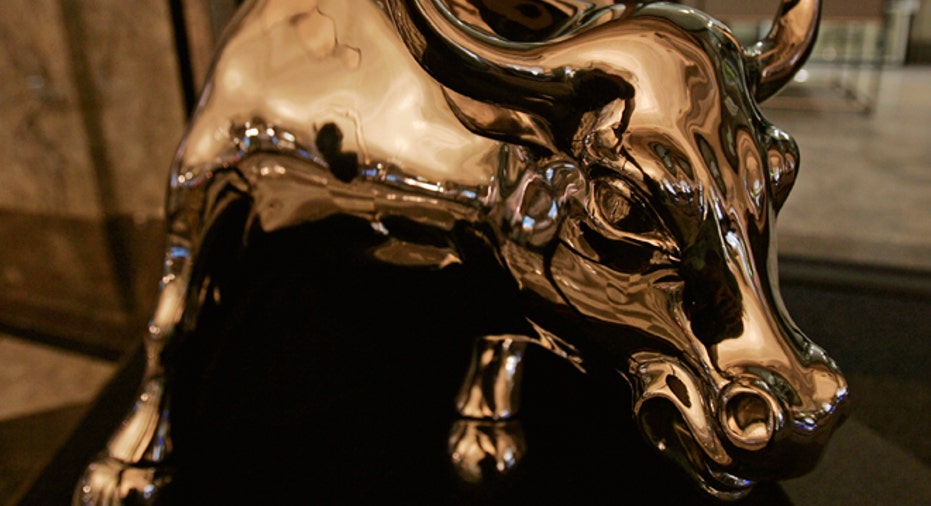U.S. Economic Growth Outlook Brightens

After years of lackluster growth that was continuously threatened by political and external events, the risks to the U.S. economy finally appear to be firmly on the upside.
In recent days, investors learned that private-sector employment soared by 200,000 for the third month in a row and the U.S. trade deficit shrank to levels unseen in four years thanks to soaring energy exports.
Combined with relative quiet on the fiscal front, the upbeat economic headlines have prompted forecasters to ramp up growth estimates. This could free up the Federal Reserve to end quantitative easing later this year and add further fuel to the red-hot stock market.
“Growth appears to be accelerating,” Michael Wilson, chief investment officer at Morgan Stanley’s (NYSE:MS) wealth management arm, wrote in a note to clients this week. “We are now five years into the recovery from the financial crisis and the economy may finally be achieving some self-sustaining momentum.”
Economists continue to sound a rosier tune on U.S. growth prospects. Earlier this week, Barclays (NYSE:BCS) made a huge revision to its forecast by doubling its call for fourth-quarter gross domestic product growth to 3% from just 1.5%. Macroeconomic Advisers boosted its fourth-quarter GDP forecast to 3.5%.
Stuart Hoffman, chief economist at PNC Financial (NYSE:PNC), said he grew more optimistic than the consensus weeks ago.
“Johnny-come-latelies, welcome to reality,” Hoffman said. “If Vegas had lines on GDP growth and they were saying 2%, I’d have put a lot of money on over. Now they’ve probably move the line up to 2.5% and I’d still take the over.”
Jobs, Trade Data Lift Spirits
So what’s behind the more upbeat attitudes?
For starters, recent economic indicators suggest growth is finally ready to break out of its current range.
Earlier this week, payroll processor ADP estimated 238,000 private-sector jobs were added in December, blowing past forecasts for 200,000 and marking the best report since November 2012. The service sector added 170,000 jobs, with construction firms hiring 48,000 -- the most in eight years.
More attention will be paid to Friday’s December jobs report, which bullish investors hope will confirm the trend. The stronger-than-expected ADP report prompted Goldman Sachs (NYSE:GS) to raise its projection for the jobs report by 25,000 to 200,000.
Meanwhile, the Commerce Department this week said that the U.S. trade gap narrowed to $34.25 billion in November, the lowest level since October 2009.
The trade data highlight how the shale oil and gas boom is transforming the energy sector, sending exports soaring and imports tumbling.
D.C. Headaches Fade
Meanwhile, for the first time in years, U.S. investors do not need to monitor a doomsday countdown clock signaling when Washington will next go to the bring of blowing up the economy.
The budget compromise reached last year removes the threat of an imminent government shutdown and raises the already-high chances that a debt ceiling crisis will be avoided. There is little appetite for new spending in Washington, but there are also few signs of new fiscal obstacles.
“With Washington staying out of the way (no crises, no major new fiscal headwinds), when was the last time we could say this: the risks on the economy are upside risks,” Greg Valliere, chief political strategist at Potomac Research Group, wrote in a note to clients this week.
Moreover, there have been some positives on the fiscal front in the form of deficit news. The U.S. reported a $44 billion budget surplus in December thanks to an 8% rise in receipts amid huge payouts from mortgage giants Fannie Mae and Freddie Mac.
Valliere said the deficit may dip below 3% of GDP this fiscal year and could fall even further in the following years.
Global Jitters on the Backburner
To be sure, some economists are skeptical about the rosier growth outlook and note that headwinds remain.
“We’ve seen this before where you get a spade of stronger data around year-end…and it ends up resulting in too much optimism,” said Michele Girard, senior economist at Royal Bank of Scotland (NYSE:RBS). “I still don’t think the economy can sustainably grow above the 3% mark.”
Still, Girard acknowledges the global situation looks much more favorable than it has in years.
Recent global shocks that have hurt U.S. growth include the debt crisis-fueled economic recession in the eurozone, violence in the Middle East that drove up energy prices and the 2011 earthquake and tsunami in Japan.
“We’re not worried about Europe suddenly blowing up,” said Girard.
Of course, that doesn’t mean a geopolitical event won’t emerge in the coming quarters. Investors, who rarely price in such events ahead of time, have expressed concern over territorial tensions in the South China Sea and a surge in violence in the Anbar province of Iraq.
Assuming the U.S. economy avoids geopolitical headwinds, the bullish economic sentiment favors the Fed taking away the QE punchbowl sooner rather than later. Fed officials have signaled a desire to avoid fueling a speculative bubble in equities or driving up inflation by continuing QE too long.
“After a 4% GDP print in Q3 and the possibility of a 3%+ print in the fourth quarter, investors will have to be on guard for an acceleration in economic activity and with it, a greater reduction in asset purchase volumes,” Dan Greenhaus, chief global strategist at BTIG, wrote in a note to clients.